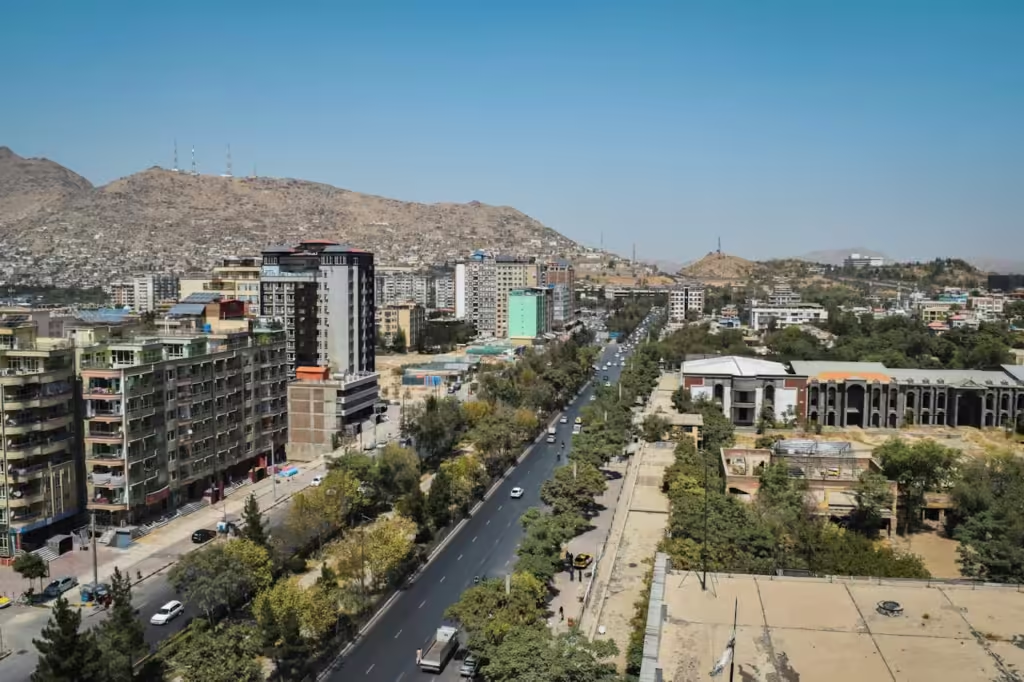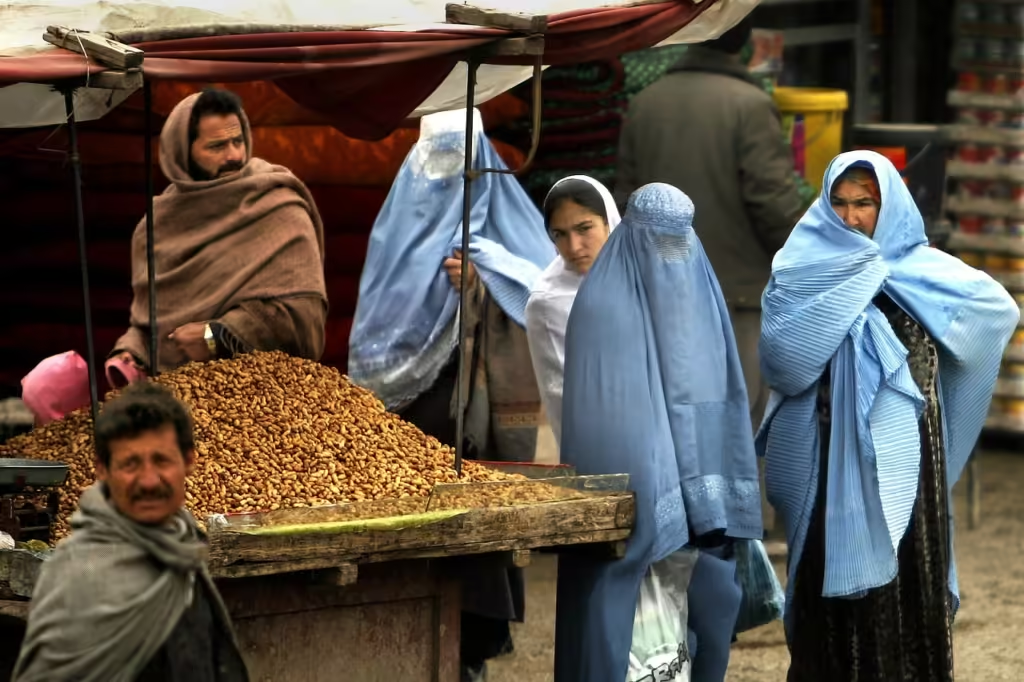In 2003, the US invaded Iraq purportedly because the Bush administration thought that merely killing terrorists in Afghanistan would not eliminate global terrorism. In reality, Iraq was invaded to secure Iraq’s oil pipelines. Iraq war distracted the Americans from Afghanistan, which was invaded by the US to neutralise terrorists who tore down the Twin Towers. The quick defeat of the Taliban and the progress in capturing or killing Al Qaeda leaders one by one made the American leadership complacent.
The war in the Middle East diverted ‘90 per cent of American attention to Iraq and 10 per cent of American attention to Afghanistan’. The US started to send its best minds to Iraq and started reducing the resources allocated to Afghan nation-building. The Afghan people were extremely disappointed with the slow pace of reconstruction and prevalent corruption in the top leadership. 2003 was coupled with the Invasion of Iraq and the launch of the Taliban insurgency. 2006 was coupled with a reduction in nation-building and a sharp escalation in insurgency attacks. Iraq’s invasion gave the Taliban the perfect circumstances for a comeback.

The Taliban’s Offensives in Afghanistan and Iraq War
Before Bush came to power, President Clinton established a handling process of nation-building overseas by Presidential Decision Directive 56. Bush didn’t extend the order and hence it expired. Thus the US was left with no institution for nation-building to deploy in Afghanistan. Neither did it have any structural capability to stabilize and rebuild nations. The responsibility of building up Afghanistan was dumped upon USAID. This later became the bone of contention. Rumsfeld and George Tenet, the head of the CIA, wanted USAID to become a CIA front.
Important decisions of investment in particular sectors were overruled by Rumsfeld and Tenet. The CIA wanted every USAID dollar to be used to help capture Laden. Attributing to conservative rule, a large amount of USAID funds- as large as $57 million were given to Christian fundamentalist NGOs in the Muslim world. Many USAID employees resigned from the organization disillusioned with their government. USAID was transferred to the State Department after that.
Many efforts were made by Karzai, Brahimi, UN Secretary-General Kofi Annan and Finance Minister of Afghanistan Ashraf Ghani. A trust fund was set up in Tokyo but few nations were willing to donate. The limited donation went to humanitarian relief. No reconstruction work was done for the first two years. Karzai repeatedly pressed for road construction, especially the ring road that connected the nation’s four largest cities. The road had been severely damaged during the Afghan civil war. CIA was becoming the major hindrance in reconstruction with its narrow vision for Afghanistan. It declined the construction of the road until November 2002 when Bush finally approved it.
The military was given the task of training civilian officials under the programme of Provincial Reconstruction Teams (PRTs). PRT was interagency teams composed of a security force, medical and logistics components, a civil affairs team, command and control elements, and representatives from the State, USAID, and sometimes the U.S. Department of Agriculture (USDA).

However interagency cooperation was easier said than done. A strategy that brought the military, USAID, State, and other civilian agencies together to plan and execute an integrated strategy was seriously lacking. As a consequence, uniformed members of the military with no governance experience were assigned the difficult task of training and mentoring Afghan civilian government officials.
The lack of US troops on the ground convinced the Taliban that Americans were not serious. ISI was amazed that Rumsfeld didn’t deploy even one thousand troops and was ignorant of the militants escaping through Tora Bora. In summer 2002 the Taliban leadership started to get back in touch with its fighters. In winter 2002 Mullah Omar arrived in Quetta and was housed by ISI and in the safe houses of JUI which was now a part of the provincial government. When the US government was being distracted by Iraq, Mullah Omar started to plan insurgency. He appointed four senior commanders to reorganize fighters in the southern provinces of Uruzgan, Zabul, Helmand and Kandahar.
Taliban started to raise funds from Islamic Charities, political groups, Arab countries, Pakistani businessmen sympathetic to it etc. Taliban had risen in 1994 by monetary and political contributions from Pakistani businessmen who wanted a safe route for goods going to and coming from Central Asia. Post-Soviet Afghanistan was ruled by numerous warlords who used to charge tolls every time goods used to cross their region. Fed up of paying multiple tolls, they wanted a single regime between Pakistan and Central Asia. These businessmen were helped by Benazir Bhutto who created the Taliban through his Pashtun interior minister Naseerullah Babar.
In early 2003 Taliban began its military campaign, launching guerrilla attacks in two southern provinces. The first major battle took place near Spin Boldak in late January. US troops were attacked by eighty militants. Dozens of them were killed. This trend continued throughout the year. Taliban and AlQaeda had started attacking foreigners- US soldiers, foreign engineers, tourists, humanitarian workers from organizations such as ICRC, NGO workers etc. There also began a trend of suicide bombings; though there were just 2 suicide attacks in 2003, by 2006 it had increased to 139. Even as US soldiers were being targeted by militants, Rumsfeld flew to Kabul and declared ‘ the end of combat operations’ against the enemy. His own commanders gave a different assessment of the situation. According to them Al Qaeda and Hekmatyar were offering monetary incentives to kill or capture US soldiers. There was the presence of the Taliban in Helmand province facilitating drug trade.
The Americans were in a denial mode. They wanted to project Afghanistan as a success. Even after repeated attacks on US soldiers, Rumsfeld didn’t deploy more troops to keep the Taliban in check. There was a rising cognizance in the top American leadership of the unpopularity of the death of troops on foreign soil among the common Americans and the Congress. Hence the administration wanted mercenaries to do the task. The militias of warlords were thus preferred over regular troops. The United Nations Assistance Mission in Afghanistan (UNAMA) was releasing increasingly pessimistic reports on worsening security situations. Brahimi was particularly concerned and urged the international community to increase its involvement. Under such circumstances, the warlords refused to demilitarize their militias under the Disarmament, Demobilization and Reintegration(DDR) program as it was deemed tantamount to surrender in such a situation.
Zabul became the main entry point for the Taliban. The province lies between Kabul and Kandahar where the first phase of the ring road was being planned. Insurgents tried to secure a base area where they could assemble troops and supplies. By the winter of 2003, the Taliban had control over 80% of the province. The proximity to Balochistan made it easy to bring weapons into the state. There were also caches of weapons that were earthed before the Taliban left Afghanistan in the winter of 2001. The Taliban despite launching war in the province remained popular. The pro-Taliban network had not been touched by a pro-Western government.

Taliban was gathering in the same places it had started in 1994, namely Kandahar, Helmand and Zabul in the south. The American embassy was however very optimistic about improving security. It said in 2005:
Improving security and stability is our most important strategic goal. The successful national election, as well as an improved coalition counterinsurgency strategy, has diminished the threat of the Taliban and other extremists. If this trend continues and steps are taken to end sanctuaries in neighbouring countries and to implement a reconciliation and accountability program, the insurgent threat could be effectively eliminated in 2005 and 2006.
The reality couldn’t have been more different. The attack on US troops was increasing continuously. The Taliban was killing aid workers, and burning down schools and clinics. They were emulating al Qaeda tactics of suicide bombings. In 2003 there were just two suicide attacks, in 2004 there were five, in 2005 there were 17 but in 2006 they increased to a whopping 139. There was also a dramatic increase in the combined number of improvised explosive devices (IEDs) that were found or detonated during the same period, from 81 in 2003 to 1922 in 2006. In 2009, the total IEDs found or detonated were more than 7000. U.S. casualties continued to rise throughout this period, from 17 hostile fatalities in 2003 to 83 hostile fatalities in 2007, and the sharpest increases were yet to come.
Between 2002 and 2005 the US didn’t bother to monitor Taliban activities in four southern provinces bordering Pakistan’s Balochistan. The lookdown satellites that were used to monitor the movement of militants were tasked to do surveillance in Iraq. The US administration ignored the surveillance because they believed that there could be no al Qaeda presence in southern Afghanistan.
In 2005 when hitherto insurgency was at its peak Rumsfeld ordered a reduction in troops on the ground by three thousand, reducing the number of soldiers to sixteen thousand. Rumsfeld just refused to accept that the Taliban insurgency was escalating. The absence of basic services in the south was fueling the rise of the Taliban. The absence of justice had become the primary recruiting tool for militants. They were providing people with an alternative. On their interpretation of sharia law, they carried out a ‘justice on the spot’ system. People didn’t prefer Sharia but it was still better than the absence of any justice system.
Policy Change
2006 was the decisive year that changed the tide in favour of the Taliban. There was a sharp increase in violence in the form of ambushes, suicide attacks, killings of civilians etc. The narrow viewpoint of the US administration was backfiring. The lack of troops had allowed the militants to regain the lost territory. A change in US policy was inevitable.
Since 2004 the Bush administration was considering a policy change in Afghanistan. In 2004, new counterinsurgencies were introduced involving small groups of US soldiers to live among some villagers to win the hearts and minds of ordinary Afghans and to gather intelligence. However, it was not until 2005 that a real change of policy was made. A National Security Council (NSC) strategic review in 2006 concluded that the United States needed to adapt the strategy to “prosecute a ‘counterinsurgency’ to augment and complement ongoing ‘post-conflict stabilization’ activities so that, together, they can succeed.” The review considered stabilization activities as separate from counterinsurgency.
The U.S. government recognized the need to “re-introduce” stabilization programming in 2007 and subsequently “began implementing programs designed to coordinate closely with combined international and Afghan security forces to support and sustain security gains. In 2005, NATO defence ministers met in France to discuss the merging of NATO and ISAF command under Operation Enduring Freedom. The US was particularly eager for the merger as it would make it easier for them to cut several troops on the ground.
ISAF was created by the UN to manage the security of Kabul and surrounding areas. In December of that year, the merger was done and all NATO and half of US forces were to come under joint NATO-ISAF command. NATO now came to the forefront. Earlier due to lack of cooperation between NATO and other US forces, it was setting ambiguous targets and missing deadlines. It had no standing army or ready-to-go equipment. Many countries failed to provide their share of soldiers. The rotation of command also made the operations hectic.
Some NATO commanders had complained against US airstrikes and the negative impacts of it. But soon after the merger, it used more airpower than the US had ever used. NATO was unwilling to take the risk of shifting troops from barracks and deploying more of them on the ground. Even after assigning more than forty thousand troops in Afghanistan, the insurgency could not be stopped. Moreover, with more reliance on air power and the US conducting its own drone strikes in the south, the hope of winning over the population was decreasing.
The strikes were killing innocent civilians in the Pashtun belt increasing their nationalist tendency and support for the Taliban. Many such killings had resulted in riots and protests against Karzai and the US. The government was becoming unpopular in the southern states. In the last six months of 2006, there were a staggering 2100 airstrikes.

On the other hand, the US was conducting its own drone strikes in Afghanistan and Pakistan. During the first five years of the drone campaign (2004–08), there were 46 such strikes; in the next five years (2009–13) there were 321. Depending on various claims, between 2,000 and 3,500 individuals are estimated to have been killed in these attacks, but it is not clear how many of these were terrorists. The use of drones was controversial both at home and abroad. In many occasions, the targets were found to be wrong. The CIA station chief in Islamabad believed that the drone strikes in 2005 and 2006 ‘were often based on bad intelligence and resulted in many civilian casualties’.
A study conducted by a US military adviser has found that drone strikes in that country during 2012–13 caused ten times more civilian casualties than strikes by manned aircraft. Such strikes were further fueling the insurgency. These were undermining the reconstruction efforts on the part of the US. The drone strikes were destroying tremendous amounts of infrastructure as well.
Conclusion
After 2008 American attention shifted back to Afghanistan. After the sudden surge of Taliban attacks for two consecutive years, the rising threat of suicide attacks, increasing number of casualties of foreigners (both military and civilians) the US administration finally realized the importance of deploying more troops on the ground and revamping its commitment to nation-building. This is evident in the surge of US troops during Obama’s first term and the increase of reconstruction efforts. But all these approaches have been short-sighted and naïve. Successive governments of the US have had a lack of understanding of the ground situation.
According to journalist Carlotta Gall since 2001, America has adhered to a wrong approach to eliminate Taliban and al Qaeda. Instead of fighting them in Afghanistan, she argues, America should focus on eliminating their camps in Pakistan. The Taliban has its most ardent supporters in Pakistan’s ISI. The ISI and the army consider foreign policy regarding Afghanistan and India as their prerogative.
The US has always, in a short-sighted manner, relied on Pakistan’s military dictators to deal with Afghanistan. First in the 1980s when Zia ul Haq was dismantling Pakistani Democracy in every possible manner and second after 9/11 when Bush chose to deal with Musharraf without encouraging democracy in Pakistan. The army has always played a double game by supporting rebels and capturing a few just to maintain optics.
To loosen the grip of the army on the institutions of Pakistan must be a priority for the US. A better long-term strategy for the US would be to enhance its engagement with the elected civilian government, especially with that of Bhuttos and Sharifs, who have seen the brunt of the military in the past. The US should encourage economic activities between India and Pakistan to decrease the anti-India fervour prevalent in Pakistan.
The US should also try to win the hearts and minds of ordinary Afghans by revamping the economic aid. More importantly, the implementation of aid programs should be well coordinated with military strategy. The implementation of reforms in the Afghan government is also essential. The country is one of the most corrupt in the world. This has always impeded the growth and engendered hate towards the government officials in the minds of ordinary Afghans. In other words, there can not be any short-term strategy for stabilizing Afghanistan. No president can deliver stability in just four years. It has to be a long-term and multi-faceted strategy. Afghanistan cannot be stable as long as the surrounding countries remain unstable and undemocratic.
References
Ahmed Rashid, Descent into Chaos: Pakistan, Afghanistan and the Threat to Global Security
Hassan Abbas, Taliban Revival: Violence and Extremism on Pakistan-Afghanistan Frontier
Ron Suskind, One Percent Doctrine: Deep Inside America’s Pursuit of Its Enemies Since 9/11
Ahmed Rashid, Taliban: Militant Islam, Oil and Fundamentalism in Central Asia
SIGAR, Stabilization: Lessons from US Experience in Afghanistan
Gilles Dorronsoro, The Taliban’s Winning Strategy in Afghanistan
https://www.nytimes.com/2010/02/16/world/asia/16intel.html
https://www.nytimes.com/2009/02/10/world/asia/10quetta.html
https://www.aljazeera.com/indepth/opinion/afghan-war-failure-usa-191223104820851.html •
https://www.washingtonpost.com/graphics/2019/investigations/afghanistan papers/afghanistan-war-nation-building/




